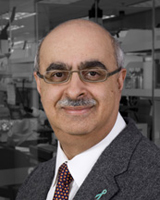Darius Bagli

Profile: Senior Associate Scientist, SickKids Research Institute
Department: Surgery, University of Toronto
Lab: Bagli Lab
Research Interests:
The two complementary goals of my translational research program are to exploit cell-microenvironmental interaction to:
1) discover novel pharmcotherapy to prevent or subvert patho- mechanicaly induced organ damage, and
2) encourage stem and precursor cell recovery or growth for repopulation and differentiation in the design of smart-matrices for engineering and regenerating tissues.
We use the urinary bladder as a translational disease model. Urinary bladder obstruction leads to bladder muscle wall thickening, extracellular matrix (ECM) deposition, and myocyte hypertrophy and hyperplasia. Ensuing bladder dysfunction causes incontinence, recurrent urinary infection, and chronic kidney damage. Obstruction creates a primary pressure/distension injury. Obstructed human and animal bladder muscle also becomes hypoxic, likely from microvascular compression during excessive distension. Using cell and whole organ culture models we have determined several mechanically stimulated alterations in the baldder wall microenvironment which regulate cell prolfieration and differnetiation. This pro-porliferative microenvironment is regulated by the coordinate activation of metalloprteinases (MMPs) and at least 2 key signaing pathwyas, erk1/2 MAP kinase and mTOR (mamallian target of rapamycin). Our matrix biology studies of ECM hyaluronic acid (HA) have shown that bladder pressure injury activates the RHAMM HA-receptor in the bladder wall, and that peptidic inhibition of RHAMM can attenuate pressure-induced ECM responses in the bladder wall. We are now manipulating HA-acellular bladder matrix constructs to determine optimal growth and differentiation responses of bone marrow derived mesenchymal stem cells. In 2005, we collboarated with Dr. Freda Miller in the isolation and characterization of human skin derived precursor cells (SKPs) from urological (foreskin) tissues. Presently, we are assessing the growth and differntiation responses of SKPs introduced into the pathomechanical bladder microenvironment. We are also assessing the ability of SKPs to collaborate in organogenesis using microinjection approaches into the embryonic bladder and kidney in culture. Our goal is to elucidate and target the functional cell- matrix relationships between MMPs and signaling to prevent tension/ pressure induced fibrosis and bladder wall hypertrophy associated with bladder failure. We anticipate our studies will also provide a basis for rational design of stem cell based tissue engineering strategies for bladder and other organ replacement.
